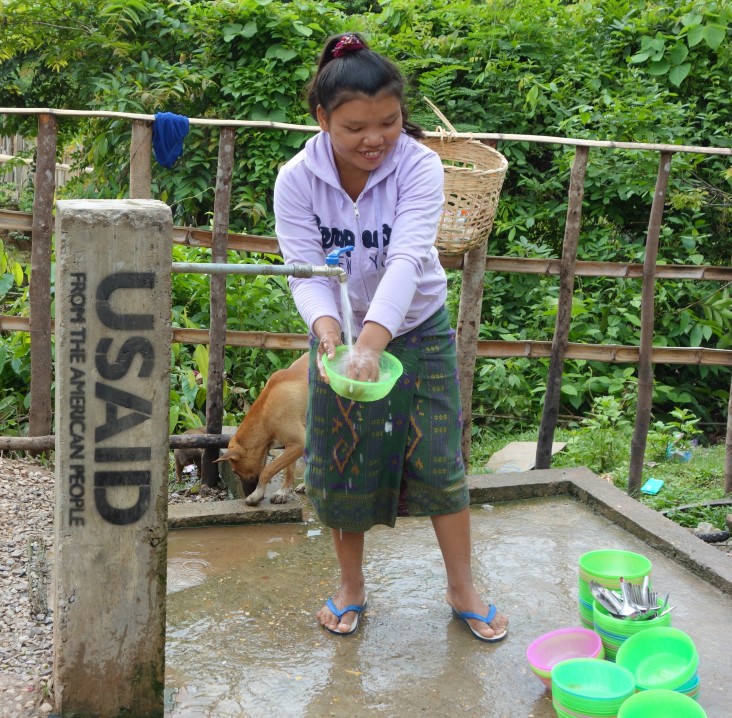Speeches Shim

December 2016—In the middle of an especially dry season from 2015 into early 2016, a 20-year-old woman provided a stark reminder of what’s at stake for rural communities throughout the Lower Mekong Basin as a result of climate change.
“Next month we won’t have any water here at all,” said Ken, who uses only one name and hails from Donkeo village in the remote Nakai district of Central Laos. “Soon we will have to walk much further up the mountain to get all of our drinking water.”
Women in rural Laos are primarily responsible for collecting water in addition to livelihood activities such as tending to home gardens and domestic livestock. In Nakai, with few communal water sources and piping from the Vietnam War Era, they often had to wait up to an hour every day to collect a sufficient amount of water for their household needs before the taps ran dry.
As a result, Ken and other women had to walk several kilometers twice a day to reach alternate water sources, which are not necessarily clean.
Challenges to accessing water seem set to become greater in Nakai and for 70 percent of rural villagers across the Lower Mekong Basin who depend on the Mekong River for their livelihoods. With the effects of the 2015-2016 El Niño—an irregularly occurring and complex series of climate changes affecting the Pacific region near the equator—these communities are experiencing the worst drought in 90 years.
Climate models project that long droughts will become more regular occurrences. Along the Mekong, dam construction is ongoing, with plans for additional development work.
Working with six Nakai subvillages in Central Laos in 2016, the USAID Mekong Adaptation and Resilience to Climate Change (Mekong ARCC) project partnered with the International Union for Conservation of Nature to address the basic need for reliable access to clean water as a first step in adaptation to climate change. Following an initial water feasibility assessment, engineers identified potential ways to increase water supply distribution and storage.
The project engaged over 300 villagers, including 73 women, to rehabilitate existing gravity-fed water systems, and construct new ones, by upgrading and installing pipeline to help improve water flow and storage. Community members also took part in trainings on water conservation as well as ecosystem and pipeline management.
As a result of USAID’s support, more than 1,400 villagers now benefit from the new and improved water systems and have water security during the dry season. Water collection is a simpler and quicker task, saving women valuable hours each day to spend tending to their other responsibilities.
“Now we have enough water for drinking and using [in the dry season],” said Ken. “In the past, we didn’t have enough water.”
Launched in 2011, the five-year Mekong ARCC project has worked in five communities in the four Lower Mekong Basin countries of Cambodia, Laos, Thailand and Vietnam to integrate science with local knowledge, increasing the ability of rural communities to adapt to the impact of climate change on water resources, agricultural and aquatic systems, livestock and ecosystems.
LINKS
Follow @USAIDAsia, on Facebook, on Flickr, on YouTube

Comment
Make a general inquiry or suggest an improvement.